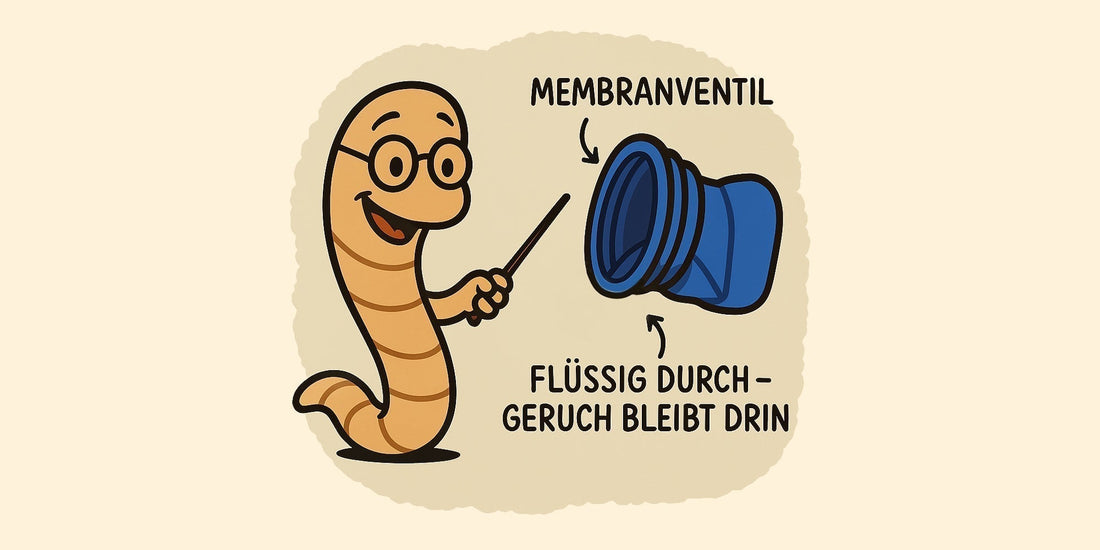
Odour trap in composting toilets – small but crucial
A central element of every good composting toilet is the odor trap.
Urine itself often has little smell – the problems only begin with air circulation.
That's why at ecoshit we rely on a particularly effective silicone membrane valve – the heart of our odor trap.
How the odor trap works
The silicone valve is designed to allow liquid to pass through but reliably blocks odors.
That means:
- Liquid can easily drain into the urine canister.
- No air circulation – and therefore no unpleasant smell.
- Spillover is prevented, even when moving, for example in a vehicle or on a boat.
A simple principle that makes everyday life much more pleasant.
If the urine does not drain well
In some cases, the valve may respond somewhat sluggishly. This is harmless and easily remedied.
The silicone can be carefully trimmed to improve flow, but only minimally to maintain the seal.
Tip: It’s better to cut in small steps and test in between.
Care and maintenance
The silicone valve is a wearing part and should be replaced when necessary.
This ensures that the odor trap remains permanently functional and hygienic.
For cleaning:
- Do not use vinegar cleaners – they attack the silicone and make it brittle.
- Better: warm water and mild soap.
- Empty the urine canister regularly – at least every one to two days.
This will prevent ammonia smell and ensure the valve remains fully functional.
Conclusion: Small, inconspicuous – but indispensable
The odor trap ensures that your composting toilet remains odorless, hygienic, and suitable for everyday use – whether in the garden, van, or at a festival.
With a little care, it remains a reliable part of your system – small, invisible, but absolutely crucial.
